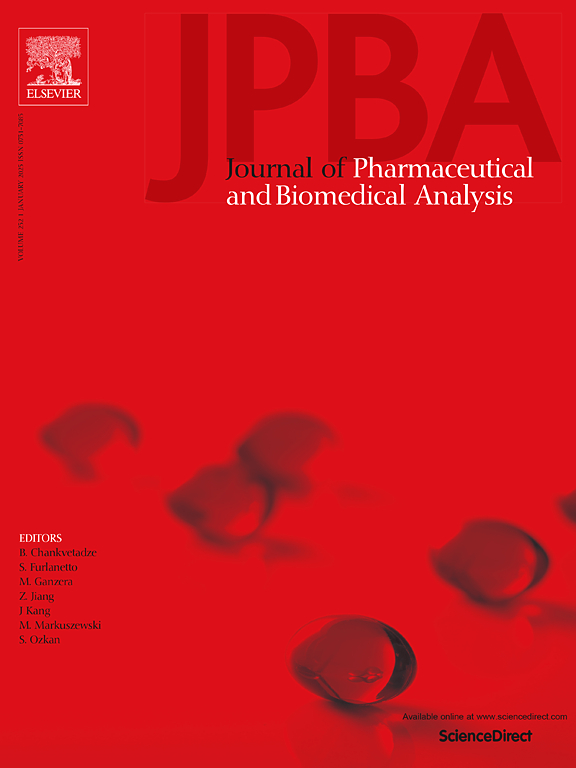A preliminary study on estimation of postmortem submersion interval of rat cadavers in freshwater through polyamine analysis in tissues
IF 3.1
3区 医学
Q2 CHEMISTRY, ANALYTICAL
Journal of pharmaceutical and biomedical analysis
Pub Date : 2025-01-31
DOI:10.1016/j.jpba.2025.116706
引用次数: 0
Abstract
The estimation of postmortem submersion interval (PMSI) has always been an important scientific issue to be addressed in drowning cases. Traditional methods, such as corpse temperature analysis and the assessment of corpse surface corruption, have limitations and cannot meet the need for accurate estimation of the time of death in the mid to late stages. Biogenic amines, as small molecules produced by protein degradation after death, have a certain regularity in relation to PMSI. To further explore the possibility of utilizing polyamines to estimate PMSI, this experiment constructed a rat cadaver model in both laboratory constant-temperature water and natural water bodies. Furthermore, cadaverine and putrescine in the liver and skeletal muscle were detected at different PMSI using gas chromatography-mass spectrometry (GC-MS). Through statistical analysis, we have constructed eight sets of mathematical models for polyamines-PMSI estimation, and determined the applicable time range through derivative analysis. After evaluation the models, the error rate in inferring PMSI using the fitted equations was less than 30 % within 242 h. The models established in this study could accurately infer PMSI in the mid to late stages of the postmortem period, providing a feasible approach for the drowning forensic issue.
求助全文
约1分钟内获得全文
求助全文
来源期刊
CiteScore
6.70
自引率
5.90%
发文量
588
审稿时长
37 days
期刊介绍:
This journal is an international medium directed towards the needs of academic, clinical, government and industrial analysis by publishing original research reports and critical reviews on pharmaceutical and biomedical analysis. It covers the interdisciplinary aspects of analysis in the pharmaceutical, biomedical and clinical sciences, including developments in analytical methodology, instrumentation, computation and interpretation. Submissions on novel applications focusing on drug purity and stability studies, pharmacokinetics, therapeutic monitoring, metabolic profiling; drug-related aspects of analytical biochemistry and forensic toxicology; quality assurance in the pharmaceutical industry are also welcome.
Studies from areas of well established and poorly selective methods, such as UV-VIS spectrophotometry (including derivative and multi-wavelength measurements), basic electroanalytical (potentiometric, polarographic and voltammetric) methods, fluorimetry, flow-injection analysis, etc. are accepted for publication in exceptional cases only, if a unique and substantial advantage over presently known systems is demonstrated. The same applies to the assay of simple drug formulations by any kind of methods and the determination of drugs in biological samples based merely on spiked samples. Drug purity/stability studies should contain information on the structure elucidation of the impurities/degradants.

 求助内容:
求助内容: 应助结果提醒方式:
应助结果提醒方式:


